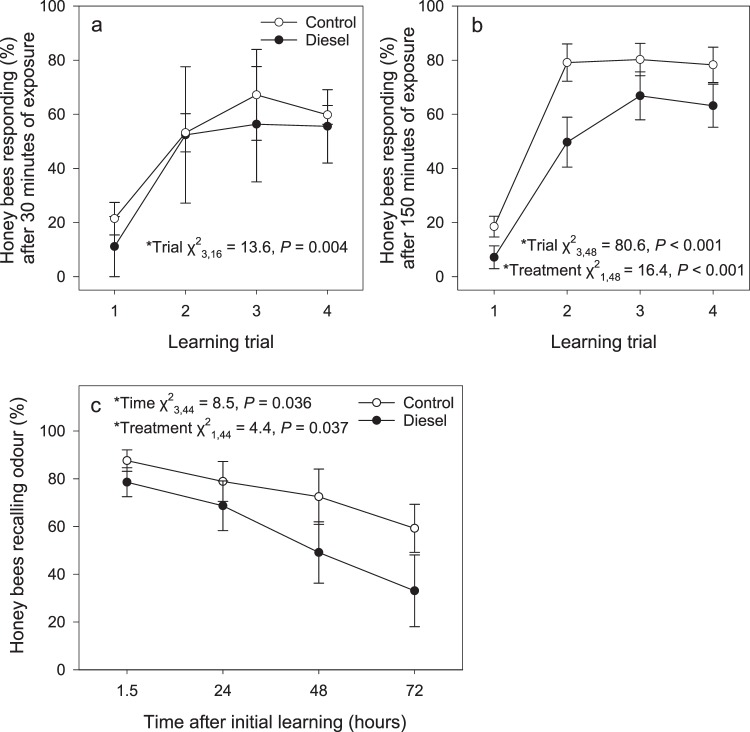Figure 1.
The percentage of honey bees (Apis mellifera) that responded to the conditioned stimulus (linalool) with a proboscis extension response within the first 10 s of odour presentation in four learning trials after 30 min of air treatment exposure (Ncontrol = 22, Ndiesel = 20) (a) and in four learning trials after 150 min of air treatment exposure (Ncontrol = 66, Ndiesel = 65) (b). For the honey bees that were given a 150-minute air treatment exposure and that exhibited a conditioned response during the learning trials, subsequent assessments were made to assess their ability to recall the conditioned odour information. It was recorded whether honey bees extended their proboscis in response to the conditioned stimuli at four different time points (1.5, 24, 48, 72 h) after the initial conditioning trials (Ncontrol 1.5,24,48,72h = 59, 55, 47, 29; Ndiesel 1.5,24,48,72h = 47, 42, 37, 23) (c). Values displayed are means (±SE). Significant beta regression model statistics shown. Full model statistics shown in Table S1.

